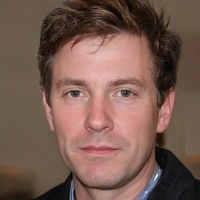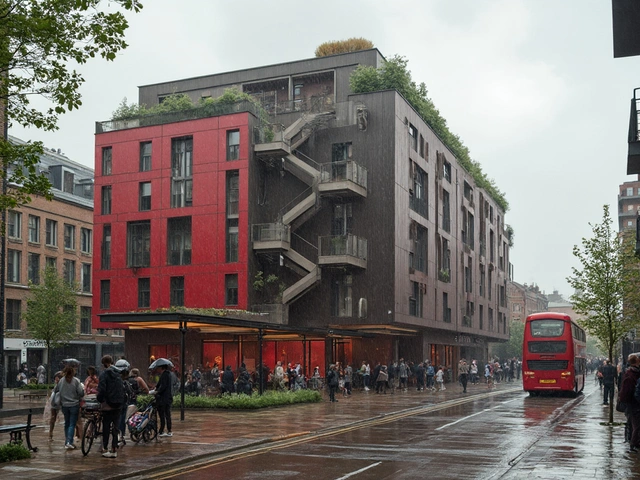Here’s the deal: a wave of radical buildings rose in the 1920s that still looks more futuristic than half of what gets built in 2025. The magic isn’t just in the sharp angles or glassy cylinders; it’s in how structure, social purpose, and motion collide. If you’ve ever stared at a workers’ club or a zig-zagging stair tower and wondered why it hits so hard, you’re in the right place. I’ll show you what makes Constructivist architecture beautiful, how to recognize it fast, where to find it, and how to get the best experience from the street-or a camera lens. No fluff. Clear steps. Honest differences from Bauhaus and Brutalism. And yes, a cheat sheet you can keep on your phone.
TL;DR: What makes Constructivist Architecture compelling (and how to see it)
Quick hits if you’re scanning:
- Beauty here isn’t pretty-it’s purposeful. Constructivism (1919-1932) treats buildings like instruments for a new society, expressed with exposed structure, dynamic composition, and industrial materials.
- Look for movement made solid: diagonal stair towers, cantilevers, cylinders smashing through rectangles, huge curtain walls. Think cranes, bridges, and propaganda posters frozen in 3D.
- Key names: Moisei Ginzburg, the Vesnin brothers, Konstantin Melnikov, El Lissitzky, Vladimir Shukhov. Primary sources worth your time: Aleksei Gan’s “Constructivism” (1922), Ginzburg’s “Style and Epoch” (1924), the OSA group’s journal SA (1926-1930).
- Not Bauhaus, not Brutalism. Bauhaus reads calm and modular. Brutalism is heavy and postwar. Constructivism is earlier, faster, and more kinetic.
- Where to see it: Moscow (Narkomfin, Rusakov Club, Melnikov House), Kharkiv (Gosprom), St. Petersburg (Red Banner Factory), plus garages, clubs, and communal houses across former Soviet cities.
Chances are you clicked this because you want to do at least one of these jobs:
- Understand what Constructivism actually was-origin, ideas, visual hallmarks.
- Tell it apart from Bauhaus and Brutalism without second-guessing.
- See the best examples, with quick context and current condition.
- Learn how to read a building on-site (or in photos) and notice what matters.
- Apply the style’s principles to your own work-design, photography, travel planning, or preservation.
How to read and experience Constructivism today (fast, practical, and visual)
Don’t start with ornament. Constructivism barely has any. Start with purpose and structure. Here’s a simple, street-ready method.
- Start with function: Identify the building type if you can-workers’ club, communal house (dom kommuny), office, factory, garage. Most were social infrastructure plugged into daily life. The program shaped everything: clubs need large halls and dramatic entrances; communal houses need shared kitchens, daycare, laundries; factories want long spans and light.
- Scan the silhouette: Do you see diagonals, stepped volumes, or a cylinder slicing through a box? Are there sharp cantilevers? Constructivist compositions feel kinetic, like a machine mid-motion.
- Track circulation: Locate ramps, stair towers, bridges. The path through the building often reads as a graphic line on the facade-spirals, zigzags, or transparent shafts.
- Read the structure: Exposed concrete frames, steel trusses, thin shells, or lattice towers aren’t just tech-they’re the aesthetic. If it looks engineered like a bridge, you’re warm.
- Check the envelope: Curtain walls, ribbon windows, glass corners. Materials are often honest: brick, concrete, steel, glass, minimal finishing.
- Look for collective life: Evidence of shared spaces-canteens, day rooms, roof terraces, reading rooms-signals the social engine that drove the form.
- Notice light and climate moves: Big south-facing windows, clerestories, double-height spaces, or roof decks. Daylight is not a garnish; it’s the point.
- Photograph with intent: Go early or late for long shadows that emphasize diagonals. Shoot from corners to capture depth. Step back with a slightly wider lens (24-28mm full-frame) to hold the whole composition without severe distortion. If a stair tower is your hero, angle from below and to the side to show its “spin.”
Quick decision rules when you’re uncertain:
- If it’s 1920s-early 1930s, shows motion and diagonals, and leans on steel/glass/concrete-it’s likely Constructivist.
- If it’s cool, orthogonal, and modular with flat white planes (and less drama), you’re likely in Bauhaus/International Style territory.
- If it’s heavy raw concrete from the 1950s-1970s with deep textures and massive forms, that’s Brutalism.
Heuristics you can actually use:
- Ask “What wants to move here?”-stairs, ramps, bridges, cranes. If you can sketch the motion line, you’re on the right track.
- Count the big volumes: box + cylinder + slab + stair tower. Three or more interacting clearly? That’s classic Constructivist composition.
- Follow the biggest span or the tallest lattice. If a single structural move defines the building, the style is likely wearing its engineering on its sleeve.
Pitfalls to avoid (seen these too often):
- Confusing late Soviet modernism with the 1920s avant‑garde. Dates matter.
- Assuming it’s “unfinished.” Many original surfaces were austere by intent. Over-smoothing or “luxury” finishes can erase the character.
- Painting everything beige. Historical research often shows stronger, high-contrast palettes on key elements like stair towers or frames.
- Ignoring conservation guidance. When adapting or restoring, follow reversible interventions and documented materials. Look to DOCOMOMO registers and ICOMOS charters; study project notes for the Narkomfin restoration (2017-2020) for a credible approach.
Where this reading method comes from: not guesswork. The core ideas are laid out in Aleksei Gan’s manifesto (1922), Moisei Ginzburg’s “Style and Epoch” (1924) and “Dwelling” research, and the OSA group’s SA journal (1926-1930). For narrative context, El Lissitzky’s 1930 book on Soviet architecture explains the movement’s international ambition. Museums and archives with strong holdings include the Shchusev State Museum of Architecture and the Getty Research Institute.
Icons, side‑by‑side differences, and a quick field guide
Let’s make this concrete with a set of exemplary buildings you can study-on foot or through images. I’ve added type and condition so you know what you’re looking at and what to expect.
| Building | City | Year(s) | Architect(s) | Type | What to Notice | Current Status (2025) |
|---|---|---|---|---|---|---|
| Narkomfin Building | Moscow | 1928-1930 | Moisei Ginzburg, Ignaty Milinis | Communal housing | Duplex units, pilotis, roof garden; social services block | Restored 2017-2020; inhabited |
| Rusakov Workers’ Club | Moscow | 1927-1929 | Konstantin Melnikov | Workers’ club | Three projecting auditoria, extreme cantilevers | Operational; conservation ongoing |
| Zuev Workers’ Club | Moscow | 1928-1930 | Ilya Golosov | Workers’ club | Glass cylinder intersecting rectangular mass | In use; alterations debated |
| Melnikov House | Moscow | 1927-1929 | Konstantin Melnikov | Private house/studio | Two interlocking cylinders; honeycomb windows | Museum access; preservation controlled |
| Shukhov (Shabolovka) Radio Tower | Moscow | 1920-1922 | Vladimir Shukhov | Broadcast tower | Hyperboloid lattice; engineering as art | Stabilized; conservation work staged |
| Gosprom (Derzhprom) | Kharkiv | 1925-1928 | Serafimov, Felger, Kravets | Office/administration | Bridged blocks; urban-scale composition | In use; conservation and protection efforts active |
| Red Banner Textile Factory | St. Petersburg | 1925-1927 | Erich Mendelsohn (adaptation) | Factory | Streamlined curves; dynamic corner | Partial reuse; conservation discussed |
| Bakhmetevsky Bus Garage | Moscow | 1926-1928 | Konstantin Melnikov, Vladimir Shukhov | Transport garage | Parabolic steel trusses; long clear spans | Cultural use; structural heritage recognized |
Now, the quick comparison so you can label what you’re seeing without a textbook:
- Constructivism (1919-1932): Social program first, motion-rich geometry, engineering on display, compositions that look almost cinematic. Expect clubs, communal housing, factories, radio towers.
- Bauhaus/International Style (1920s-1930s): Smooth planes, modular grids, balanced proportions, less drama. Think clarity over theater. Heavily residential and educational buildings, too.
- Brutalism (1950s-1970s): Heavy concrete, massive forms, deep shadows, postwar civic swagger. Different materials era, different politics.
Unbuilt visions matter here as well. Tatlin’s Monument to the Third International (1919-20) and the Vesnin brothers’ Palace of Labor projects weren’t constructed, but their angled frames and stacked volumes defined the movement’s visual language. El Lissitzky’s “Lenin Tribune” turned a speaker’s platform into an architectural machine. These paper giants shaped the built work more than you might expect.
If you only remember three things on-site: 1) find the motion line, 2) identify the structural trick, 3) connect it to the collective function. That’s the Constructivist triangle.
Checklists, mini‑FAQ, and what to do next
Here’s your pocket kit-use it while you’re standing on the sidewalk or planning a trip.
Field checklist (spot and understand it in minutes)
- Date range checks out (roughly 1919-1932)?
- Program is collective (club, housing, factory, office, garage)?
- Composed motion (diagonals, cylinders, cantilevers) is visible from the street?
- Structure reads clearly (frames, trusses, lattice) and isn’t just hidden behind plaster?
- Daylight strategies are obvious (ribbon windows, big corners, clerestories)?
- Any evidence of shared spaces-roof terraces, common rooms, bridges?
Cheat-sheet for students, designers, and fans
- Core texts: Aleksei Gan (1922), Moisei Ginzburg’s “Style and Epoch” (1924) and housing research, OSA’s SA journal (1926-1930), El Lissitzky’s 1930 book on Soviet architecture.
- Design move you can borrow ethically: express circulation. Make stairs and ramps legible from the outside. Let structure talk.
- Color note: many icons used sharp contrasts to frame movement (dark stair towers against light volumes). Research before repainting.
- Preservation tip: aim for reversible upgrades-bolt-on energy improvements and careful services routing. Look up DOCOMOMO case studies for precedents.
Mini‑FAQ
Q: Why did Constructivism end so fast?
A: Politics. By the early 1930s, official taste in the USSR pivoted to Socialist Realism and monumental classicism. The experimental, machine‑age language lost state backing, and many projects were canceled or altered.
Q: Is every 1920s modern building in Russia “Constructivist”?
A: No. There were parallel currents, including Rationalism and more conventional modernism. The giveaway is the dynamic composition tied to a social program and explicit structure.
Q: Where should a first‑timer go?
A: Moscow is the richest, with a tight cluster of icons. If you can, add a day in St. Petersburg for the Red Banner Factory, and study images of Kharkiv’s Gosprom. Always check current access and conditions before visiting.
Q: How do I photograph these without distortion?
A: Keep the camera level to avoid leaning verticals. Step back or find a higher vantage point. Use a wider lens with care; correct perspective in post only if needed to keep the drama intact.
Q: Sources I can cite in a paper?
A: Aleksei Gan’s “Constructivism” (1922), Moisei Ginzburg’s “Style and Epoch” (1924) and housing studies, SA (Sovremennaya Arkhitektura) journal issues from 1926-1930, El Lissitzky’s 1930 book on Soviet architecture, archives of the Shchusev State Museum of Architecture, DOCOMOMO registers, and recent restoration reports on Narkomfin.
Next steps by persona
- Architecture student: Pick one building (say, Rusakov Club). Do a 2‑page analysis: draw its circulation line, label the structural system, and explain how the social program shapes volume. Compare it to a Bauhaus building with the same function.
- Traveler: Map three sites within one public‑transit ride (Zuev Club → Melnikov House → Narkomfin). Time your visit for morning or late afternoon for shadows. Bring a printed sketch or save satellite views for context.
- Photographer: Build a shot list-hero elevation, structural detail, circulation reveal, context wide. One abstract frame per site that reduces it to angles and light.
- Designer: Translate one idea, not the whole style. Example: turn a stair into your focal graphic. Or choose a structural rhythm to set a brand grid. Reference the idea, avoid costume.
- Preservation advocate: Gather before/after images from archives; log alterations, especially window replacements and stair enclosures. Push for reversible fixes with documentation to support your case.
Troubleshooting common scenarios
- I can’t tell if it’s Constructivist or just early modern: Check for explicit motion cues (diagonal stairs, cylinders piercing volumes). If the facade is balanced and calm with little drama, you may be in Bauhaus territory.
- The building is heavily altered: Focus on bones. Can you still read the structure and circulation? If yes, document that. If not, hunt archival plans and photos to reconstruct the intent.
- Access is limited: Street-side reading still works. Use long lenses to isolate elements. If travel is off the table, study high‑quality scans from museum archives and peer‑reviewed publications.
- I want to apply the style without pastiche: Pick one principle-structural honesty, legible circulation, or social program-and let everything else stay contemporary.
If you want a mental snapshot, keep this: Constructivism is the moment architecture decided to look like the change it wanted-machines, movement, shared life-translated into steel, glass, concrete, and brick. When you can read that, you start to see why it still feels so alive on the street. And if you’re like me, you’ll never walk past a stair tower the same way again.



